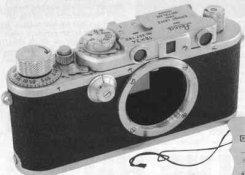- Joined
- Jul 27, 2005
- Messages
- 1,110
- Format
- 35mm
I just got a Pen EE-3
If anything has become abundantly clear in the last few years it was that, especially in the compact market, 35mm was better quality than it needed to be. People were obviously willing to trade quantity over quality which is fair enough. I'm actually looking at the moment to buy my third digital compact, but it wasn't just for some of their photography but for all of it.
This even seems to be the case in the high end film compact market, I genuinely didn't expect the likes of Leica and Ricoh to stop making film compacts so soon. IMAO it's only in recent times since the APS-C sized MILC cameras have come out we've seen the image quality significantly improve in the digital compact realm IMAO, but they're still a quite a bit bigger heavier. Anyway I digress, if that is the case, how come there were no half frame cameras in the '80s and '90s. I know that cameras like the XA and Rollei and Later Stylus Epic could show that very small FF cameras could be made, but come on 72 frames per film that's a lot of happy snapping, also near to APS-C size format, and unlike APS you can use pretty much any film you like? I tell you what I'd love to get a modern Half frame, but in mean time I'm going to love my Pen EE-3 almost to a level that might be inappropriate for a grown adult.
If anything has become abundantly clear in the last few years it was that, especially in the compact market, 35mm was better quality than it needed to be. People were obviously willing to trade quantity over quality which is fair enough. I'm actually looking at the moment to buy my third digital compact, but it wasn't just for some of their photography but for all of it.
This even seems to be the case in the high end film compact market, I genuinely didn't expect the likes of Leica and Ricoh to stop making film compacts so soon. IMAO it's only in recent times since the APS-C sized MILC cameras have come out we've seen the image quality significantly improve in the digital compact realm IMAO, but they're still a quite a bit bigger heavier. Anyway I digress, if that is the case, how come there were no half frame cameras in the '80s and '90s. I know that cameras like the XA and Rollei and Later Stylus Epic could show that very small FF cameras could be made, but come on 72 frames per film that's a lot of happy snapping, also near to APS-C size format, and unlike APS you can use pretty much any film you like? I tell you what I'd love to get a modern Half frame, but in mean time I'm going to love my Pen EE-3 almost to a level that might be inappropriate for a grown adult.







